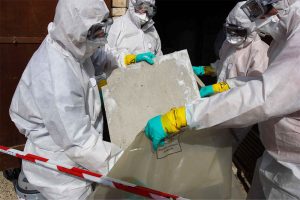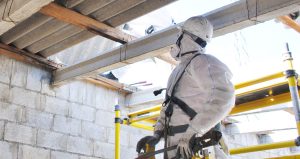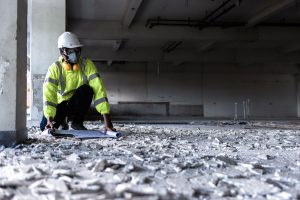A Guide to Asbestos in Plaster Walls
At Avanti we get a lot of people contacting us with queries about asbestos in plaster walls. Many of them live in older houses and are planning renovations, or refurbishments. They suspect that plaster on their walls contains asbestos, but they don’t know how to check, or what actions to take. That’s why we’ve written a guide to asbestos in plaster walls, which covers:
- Is Asbestos In Plaster Walls Dangerous?
- How to Check for Asbestos in Plaster
- Removing Plaster That Contains Asbestos
1. Is Asbestos in Plaster Walls Dangerous?
Asbestos was commonly added to plaster used in residential construction throughout the period 1940-1990. Its plentiful supply made it a cheap insulation material which is why it was popularly used for wall coatings to provide heat retention and fire resistance. If you live in a house built during in these decades, it’s highly likely that the original plasterwork contained asbestos.
Asbestos is made up of microscopic fibres that are undetectable to taste, smell and sight. If they are disturbed the fibres become airborne and can be breathed inadvertently. Once inside your body they can lodge in your lungs and oesophagus, causing chronic heath problems. If materials containing asbestos are undamaged and undisturbed, though, they are unlikely to be harmful.
2. How to Check for Asbestos in Plaster
If your house was built between 1940-90 you should assume that the plaster is likely to contain asbestos. This isn’t hazardous to health unless the plaster is damaged or disturbed. If you are planning to knock through a wall, for example, you should get a sample taken which will determine the level of risk you are dealing with.
We would recommend that you book an Asbestos Management Survey. This is carried out by asbestos specialists and is largely visual. They will look for any potential asbestos containing materials in your home and, if there is any damage or disturbance, they will take samples. These are tested at a UKAS accredited asbestos-testing laboratory and and the results are provided in a detailed report.
3. Removing Plaster That Contains Asbestos
Whilst it is not necessary to hold a license in order to remove plaster containing asbestos, we would strongly recommend that you engage professionals to do the job. This is because releasing asbestos fibres into your home environment puts you and everyone living there at risk. If you do take on the task, you will also need to dispose of the asbestos plaster legally.
An HSE licensed asbestos removals specialist will remove the asbestos safely and carry out air testing and monitoring to ensure that, post removal, the air in your home complies with European safety standards. All asbestos containing materials will be disposed of safely and legally.
About Avanti Asbestos
We are HSE licensed asbestos removal specialists for the South and North East of England. Our asbestos removal team works in line with current UK legislation and has over 10 years’ experience working in this sector. The technology and equipment we use is maintained at a high level and updated regularly.



